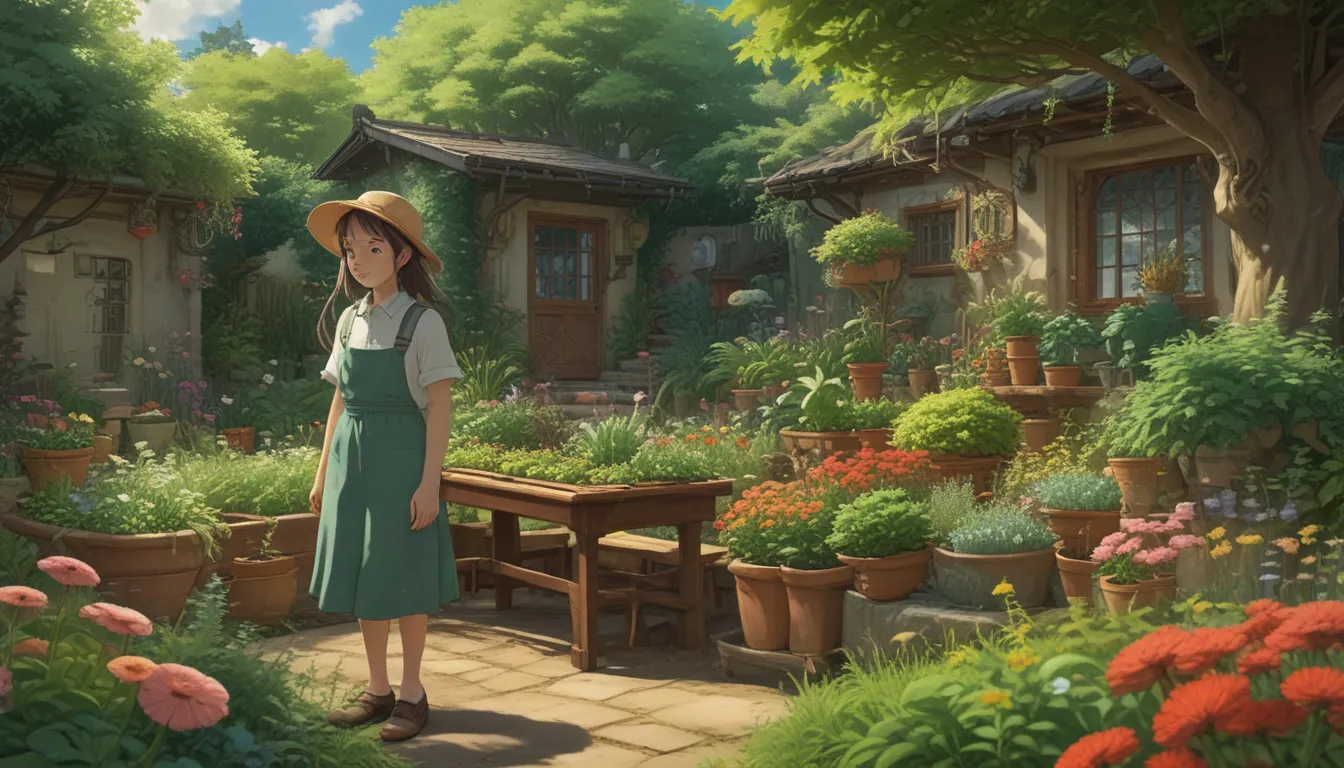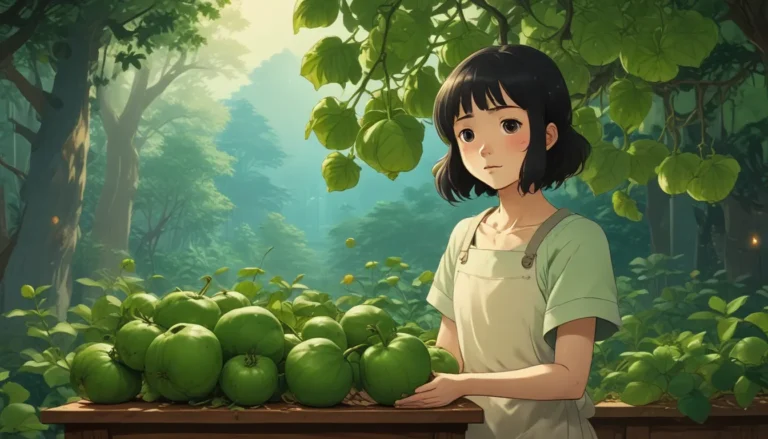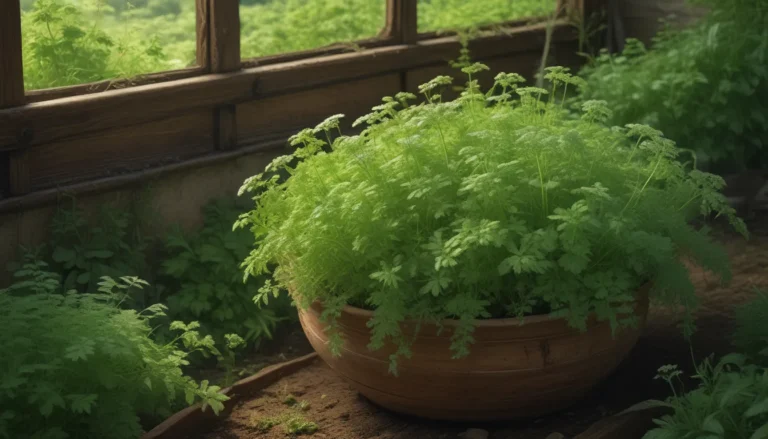Companion Gardening with Jessica Walliser: A Deep Dive into Plant Partners

If you’re an organic gardener, polyculture enthusiast, or simply someone curious about companion planting, Jessica Walliser’s book “Plant Partners: Science-Based Companion Planting Strategies for the Vegetable Garden” is a must-have in your gardening library.
Organic gardening attracts not only those seeking pesticide-free produce but also those who are interested in fostering healthy ecosystems within their own backyard landscapes. In a world where monoculture farming dominates, it’s refreshing to explore the concept of companion planting – the practice of strategically grouping plants together to maximize their growth potential and benefit from their symbiotic relationships.
Jessica Walliser’s “Plant Partners” is a comprehensive guide to companion planting that dives deep into the science behind successful pairings. If you’re ready to transform your garden into a thriving, biodiverse oasis, keep reading for an in-depth review of this informative and practical book.
First Impressions
When you first lay eyes on “Plant Partners,” you’ll notice its vibrant cover design that hints at the colorful and informative content inside. The book is visually appealing, with colorful text boxes and stunning photos of successful companion plantings that will inspire you to experiment in your own garden.
Published by Storey Publishing, known for its high-quality books on self-reliance and homesteading, “Plant Partners” sets high expectations from the start. With a foreword by gardening expert Jeff Gillman, this book is backed by expertise and credibility.
As you flip through the pages, you’ll be drawn in by Walliser’s engaging writing style and the practical advice she provides. The book’s matte pages and durable binding make it a useful reference that you’ll refer to time and time again as you plan and execute your companion plantings.
Who Is Jessica Walliser?
Jessica Walliser is a seasoned horticulturist and garden writer with a passion for organic gardening. Her background in horticulture from Penn State University and her extensive experience in the field make her a reputable source of gardening knowledge.
As a radio show cohost and co-founder of the website Savvy Gardening, Walliser shares her expertise with a wide audience. In “Plant Partners” and her other books, she combines scientific research with practical gardening tips to help readers create thriving, harmonious gardens.
A Closer Look at “Plant Partners”
Introduction: Embracing Science-Based Companion Planting
In the introduction to “Plant Partners,” Walliser sets the stage for a departure from traditional companion planting practices. Rather than relying on anecdotal pairings, she introduces scientifically verified partnerships that offer tangible benefits to gardeners.
By viewing our gardens as dynamic ecosystems, Walliser invites readers to explore the intricate relationships between plants and understand the underlying mechanisms that make companion planting successful. This scientific approach empowers gardeners to make informed decisions and create resilient, biodiverse landscapes.
The Power of Plant Partnerships: Diversifying and Strengthening Your Garden
Chapter by chapter, Walliser delves into the various aspects of companion planting, from soil preparation and weed management to pest control and disease prevention. She highlights the importance of diversity in the garden, emphasizing the role of mycorrhizae, allelopathy, and beneficial insect interactions in creating healthy, productive growing spaces.
By showcasing specific pairings and their proven benefits, Walliser equips readers with practical knowledge that they can apply in their own gardens. From attracting pollinators to deterring pests, each chapter explores a different facet of plant partnerships and offers actionable strategies for success.
Soil Preparation and Conditioning: Harnessing the Power of Natural Processes
In this chapter, Walliser discusses how companion partnerships can improve soil health through cover cropping, nitrogen fixation, and soil structure enhancement. By highlighting the role of mycorrhizae and beneficial cover crops, she demonstrates how plants work together to create fertile, resilient growing environments.
From nitrogen-fixing legumes to soil-improving cover crops, Walliser showcases specific pairings that promote soil health and plant vigor. Whether you’re dealing with heavy clay or compacted soils, her recommendations provide practical solutions for improving soil quality naturally.
Weed Management: Utilizing Living Mulches and Allelopathic Plants
Weeds can be a persistent challenge in the garden, but companion planting offers innovative solutions for weed control. In this chapter, Walliser explores the use of living mulches and allelopathic plants to suppress weeds and promote healthy crop growth.
By strategically planting cover crops and companion species, gardeners can create a natural barrier against weeds while enhancing soil fertility and structure. From clover to marigolds, Walliser offers a range of options for managing weeds without relying on harmful chemicals.
Support and Structure: Building Living Trellises and Vertical Gardens
For gardeners looking to maximize their growing space and support climbing plants, the concept of living trellises is a game-changer. In this chapter, Walliser introduces creative options for using plants as natural supports for vertical crops, such as pole beans and cucumbers.
By combining sturdy plants like corn with vining crops like squash and melons, gardeners can create living structures that not only provide support but also enhance the overall health of the garden. Walliser’s practical tips and innovative pairings inspire readers to rethink traditional garden layouts and embrace vertical growing strategies.
Pest Management: Harnessing the Power of Natural Predators and Repellents
In the battle against garden pests, companion planting offers a holistic approach that leverages the power of natural predators and repellents. In this chapter, Walliser explores four key strategies for pest management: luring, trapping, tricking, and deterring pests through companion planting.
By strategically pairing crops that attract beneficial insects and repel pests, gardeners can create a balanced ecosystem that minimizes the need for chemical interventions. From trap cropping to masking strategies, Walliser’s insights help readers develop effective pest control strategies that promote plant health and biodiversity.
Disease Management: Using Cover Crops and Living Mulches to Fight Soilborne Pathogens
While disease management may not be the first thing that comes to mind when thinking of companion planting, Walliser demonstrates how strategic pairings can help prevent and control soilborne diseases. By incorporating disease-resistant cover crops and living mulches into the garden, gardeners can reduce the risk of plant pathogens and promote overall garden health.
From using hairy vetch to protect tomatoes from disease to planting squash with white clover as a living mulch, Walliser’s recommendations provide practical solutions for managing soilborne pathogens naturally. By harnessing the power of companion partnerships, gardeners can create resilient gardens that thrive in the face of common plant diseases.
Pollination: Creating Pollinator-Friendly Gardens
The final chapter of “Plant Partners” focuses on the critical role of pollination in the garden. By highlighting the importance of attracting native pollinators and providing habitat for these essential insects, Walliser offers practical advice for promoting pollination in the garden.
From plant pairings that attract pollinators to strategies for creating nesting habitat, Walliser’s insights help readers support healthy pollinator populations and enhance fruit and vegetable yields. By emphasizing the value of diverse plantings and pollinator-friendly practices, Walliser inspires gardeners to cultivate vibrant, biodiverse landscapes that benefit both plants and wildlife.
Final Thoughts: Embracing Companion Planting for a Healthier Garden
As you immerse yourself in the world of companion planting with “Plant Partners,” you’ll discover a wealth of knowledge and practical guidance that can transform your gardening practices. Walliser’s scientific approach and engaging writing style make this book a valuable resource for gardeners of all experience levels.
While the book’s index may have a few shortcomings, its content and attention to detail more than make up for any minor flaws. As you explore the wealth of companion planting strategies and pairings presented in “Plant Partners,” you’ll gain a deeper appreciation for the interconnectedness of plants and the benefits of creating biodiverse garden ecosystems.
Whether you’re new to companion planting or a seasoned polyculturist, “Plant Partners” offers a wealth of information and inspiration that will enhance your gardening journey. As you experiment with different pairings and strategies, you’ll develop a deeper understanding of plant relationships and create thriving, resilient gardens that nourish both plants and wildlife.
In conclusion, Jessica Walliser’s “Plant Partners” is a valuable resource for anyone interested in companion planting and organic gardening. By combining scientific research with practical advice, Walliser equips readers with the knowledge and tools they need to create vibrant, biodiverse gardens that thrive naturally.
Whether you’re looking to attract beneficial insects, suppress weeds, or enhance pollination in your garden, “Plant Partners” offers a wealth of information and inspiration to help you achieve your gardening goals. With its engaging writing style and informative content, this book is a must-have for anyone seeking to cultivate healthy, productive gardens using companion planting strategies.
Do yourself a favor and dive into the world of companion gardening with Jessica Walliser’s “Plant Partners.” You’ll be amazed at the transformative power of plant partnerships and the endless possibilities for creating harmonious, resilient garden ecosystems.





